Norse mythology, a bedrock of ancient Scandinavian culture, remains vibrantly relevant in today’s world, influencing literature, art, and popular media. At the heart of these enduring legends stands Sigurd (or Siegfried), a quintessential hero whose exploits and character encapsulate the ethos of Norse lore. Sigurd’s tales, rich in adventure, bravery, and tragedy, not only reflect the values and beliefs of the Norse people but also continue to fascinate and inspire contemporary audiences. His story, woven through epic sagas and poems, offers a window into a mythical world where gods and mortals interplay, shaping the narrative tapestry of Norse mythology. Sigurd’s legacy, marked by his dragon-slaying feat and tragic destiny, elevates him as a central figure, embodying the timeless appeal of heroic sagas and their profound impact on cultural imagination.
| Attribute | Sigurd Information |
|---|---|
| Origin | Norse Mythology and Germanic Sagas |
| Heroic Figure | Legendary hero known for his bravery and heroism |
| Dragon Slayer | Famed for slaying the dragon Fafnir and obtaining the cursed treasure hoard |
| Sword | Wielded the sword Gram (Balmung), which he used to kill Fafnir |
| Valkyrie | Aided by the Valkyrie Brynhildr and involved in her tragic story |
| Cultural Impact | A central figure in Norse and Germanic heroic literature, symbolizing heroism and honor |
| Depictions | Featured in the Völsunga Saga and the Nibelungenlied, among other sagas and poems |
1. The Origin and Birth of Sigurd
Sigurd’s Lineage and Birth
The tale of Sigurd begins in the hallowed texts of Norse mythology, particularly the ‘Volsunga Saga’ and the ‘Poetic Edda’. Born to the noble lineage of Volsung, Sigurd is the son of Sigmund, a renowned warrior, and Hjordis, a princess with a strong spirit. His birth is marked by omens and prophecies, foreshadowing his extraordinary destiny. The sagas tell of how, following Sigmund’s untimely death in battle, Hjordis ensures the survival of their lineage, ultimately leading to Sigurd’s birth and upbringing under the care of Regin, a cunning smith with hidden agendas.
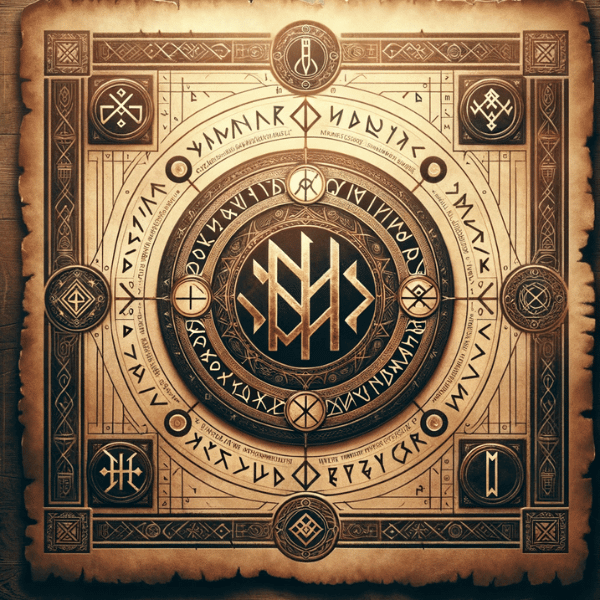
Historical and Cultural Context
In the tapestry of Norse myths, Sigurd’s story is not just a personal saga but a reflection of the values and societal norms of the time. His lineage and birth are emblematic of the emphasis placed on noble blood and destiny in Norse culture. The circumstances of his upbringing, surrounded by prophecy and nurtured for greatness, mirror the Norse belief in fate and the inevitable course of one’s life, as governed by the Norns. Sigurd’s story, set against the backdrop of a warrior society, also highlights the cultural importance of bravery, honor, and the pursuit of glory, virtues highly prized in Norse society. His narrative serves as a lens through which we can understand the historical and cultural fabric of the ancient Norse world.
2. The Legend of Sigurd
Slaying the Dragon Fafnir
Sigurd’s most famous adventure, immortalized in Norse sagas, is his epic battle with the dragon Fafnir. Guided by his mentor, Regin, Sigurd crafts a powerful sword, Gram, from the fragments of his father’s blade. With Gram, he confronts and slays Fafnir, who guards a cursed treasure. The dragon’s slaying signifies not just physical bravery but also the triumph over greed and corruption, as Fafnir was once a man transformed by the lure of gold.
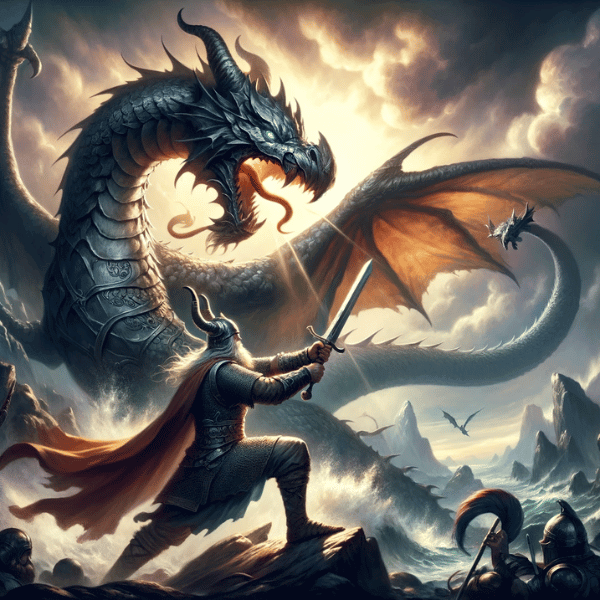
Winning the Treasure of the Nibelungs
The slaying of Fafnir leads Sigurd to the treasure of the Nibelungs, a hoard of gold that brings misfortune to its possessors. Sigurd acquires this treasure, unaware of its cursed nature. This part of his saga intertwines with themes of fate and destiny, as the curse of the gold propels many of Sigurd’s subsequent trials and tribulations.
Involvement with the Valkyrie Brynhildr
Sigurd’s story takes a turn with his involvement with Brynhildr, a Valkyrie. After awakening her from an enchanted sleep, Sigurd and Brynhildr pledge their love. However, due to deceptions and broken promises, their tragic love story unfolds, adding a layer of romantic tragedy to Sigurd’s legend.
Comparison with Germanic Legend of Siegfried
Sigurd’s Norse saga parallels the Germanic legend of Siegfried. While the core elements of dragon slaying and tragic love are consistent, Siegfried’s tale in works like the ‘Nibelungenlied’ has its unique nuances, reflecting the differences in cultural storytelling and myth-making between the Norse and Germanic traditions. Sigurd’s narrative is deeply entrenched in Norse spiritual and societal values, while Siegfried’s story aligns more with medieval Germanic ideals.
3. Sigurd’s Relationships and Betrayal
Sigurd’s Relationships with Gudrun, Gunnar, and Brynhildr
Sigurd’s life is intricately woven with significant characters who shape his destiny. Gudrun becomes his wife through a series of manipulations and misunderstandings. Gunnar, Gudrun’s brother, plays a pivotal role in Sigurd’s fate. His desire to marry Brynhildr, a Valkyrie originally betrothed to Sigurd, sets off a chain of deceptions. The complex relationship between these characters is a testament to the intricate human emotions and societal norms depicted in Norse myths.
The dynamic between Sigurd and Brynhildr is particularly poignant. Initially united by a deep love, their relationship is marred by Sigurd’s unintentional betrayal. The saga portrays their bond as one of the great tragic romances of Norse mythology, underscored by honor, promises, and the tragic consequences of their breach.
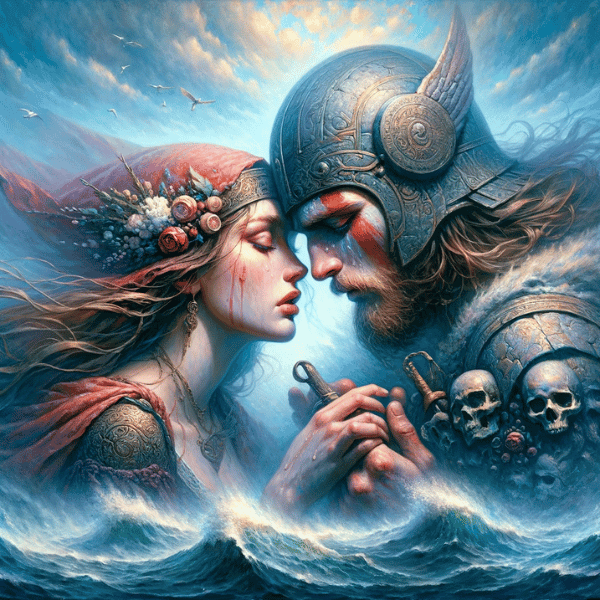
The Betrayal and Tragic End of Sigurd
Sigurd’s life ends in betrayal and tragedy. The sagas recount how Sigurd is ultimately killed by those he trusts. In the ‘Volsunga Saga’, it is through a plot hatched by Gudrun’s brothers, fueled by jealousy and the desire for the cursed treasure. His death, often viewed as a result of the inexorable workings of fate and the curse of the gold, marks a somber end to the hero’s journey.
Sigurd’s demise is not just a personal tragedy but also a narrative tool reflecting the Norse understanding of fate and the consequences of human actions. The primary sources, like the ‘Volsunga Saga’, present these themes compellingly, offering insights into the Norse worldview where destiny, honor, and the supernatural intertwine to shape individual fates.
4. The Hero’s Journey: Analyzing Sigurd’s Epic Tale
Joseph Campbell’s concept of the Hero’s Journey provides a fascinating framework to analyze Sigurd’s epic tale. This universal template of hero mythology, comprising stages like the Call to Adventure, Trials and Tribulations, and The Return, can be observed in Sigurd’s story, underscoring its timeless and universal appeal.
- The Call to Adventure: Sigurd’s journey begins with his birth under auspicious circumstances and the prophecy that marks him for greatness. His upbringing and the forging of his sword Gram symbolize the preparation for his destined path.
- Crossing the Threshold: The slaying of the dragon Fafnir represents Sigurd’s crossing into a world of great challenges and supernatural elements, a key phase in the Hero’s Journey.
- Trials and Tribulations: Sigurd faces numerous trials, from dealing with the cursed treasure of the Nibelungs to navigating complex relationships with Brynhildr, Gudrun, and Gunnar. Each challenge tests and shapes his character.
- Abyss and Transformation: The greatest transformation for Sigurd comes through his tragic romance with Brynhildr and the ensuing betrayals. This phase signifies the hero’s descent into the abyss, facing his deepest fears and experiencing profound change.
- The Return and Elixir: Unlike many heroes’ journeys that culminate in a return with newfound wisdom or elixirs, Sigurd’s journey ends in betrayal and death. However, his story’s impact and the lessons it imparts act as the ‘elixir’ for the audience, offering insights into bravery, honor, and the tragic beauty of human imperfection.
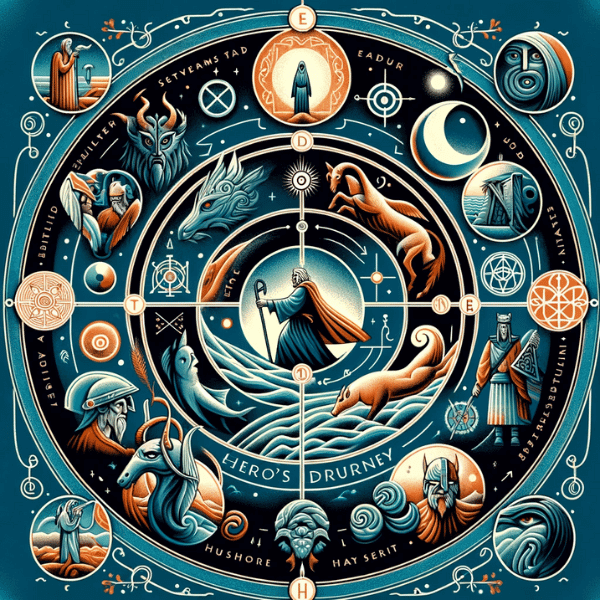
Analyzing Sigurd’s story through Campbell’s Hero’s Journey not only highlights its narrative structure but also connects it to a broader spectrum of hero myths across cultures. This analysis reveals the universal patterns in myth-making and the enduring power of these stories to convey fundamental human experiences and values.
5. Historical and Cultural Impact
Sigurd’s Impact on Norse Culture and History
Sigurd’s saga, deeply ingrained in Norse mythology, has had a profound impact on the historical and cultural fabric of Norse society. His story encapsulates key Norse values such as bravery, honor, and the acceptance of fate. The legend of Sigurd, particularly his heroism and tragic end, resonated with the Viking ethos, influencing their perspectives on bravery, loyalty, and destiny. This impact is evident in various archaeological findings, like rune stones and burial sites, where references to Sigurd’s legend are found, indicating his significant place in the Norse cultural consciousness.
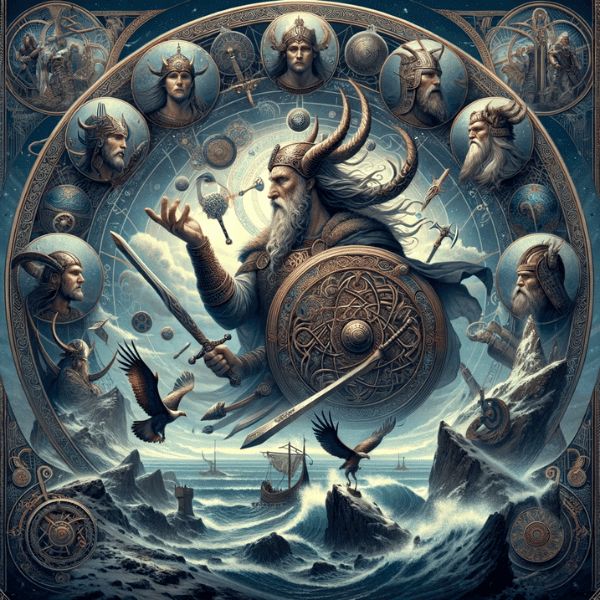
Sigurd in Modern Media, Literature, and Art
The legacy of Sigurd extends far beyond ancient texts; it permeates modern media, literature, and art. Numerous forms have retold and reinterpreted his tale, from Richard Wagner’s opera “Der Ring des Nibelungen,” which heavily draws from Sigurd’s story, to contemporary novels, films, and video games. These adaptations often highlight Sigurd’s heroism and tragic destiny, appealing to modern audiences’ fascination with complex characters and epic narratives.
In visual arts, Sigurd’s legend has been a recurrent theme, inspiring artworks that depict his heroic feats and tragic romance with Brynhildr. Furthermore, his story continues to be a subject of scholarly research and literary analysis, contributing to the understanding of Norse mythology and its role in shaping cultural and societal ideologies.
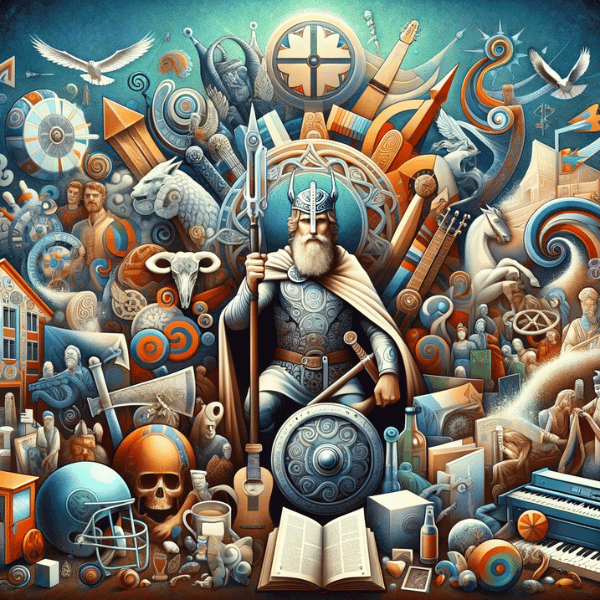
Sigurd’s enduring presence in various forms of contemporary media underscores his status as a timeless icon, whose story transcends the boundaries of time and culture, continuing to inspire, educate, and captivate audiences around the world.
6. Conclusion
Sigurd, a paramount figure in Norse mythology, encapsulates the essence of the Norse heroic spirit. His saga, interwoven with themes of bravery, fate, and tragedy, offers a profound insight into the Norse worldview, reflecting the values and beliefs of ancient Scandinavian society. The significance of Sigurd extends beyond historical lore, resonating powerfully in contemporary culture. His story, with its intricate narrative and timeless themes, continues to inspire and influence modern literature, art, and media. This enduring appeal underscores the universality of Sigurd’s tale, highlighting its ability to transcend time and cultural boundaries. As a symbol of heroism and human complexity, Sigurd remains a compelling figure, reminding us of the enduring power of myth to shape, reflect, and enrich our understanding of the human experience.
